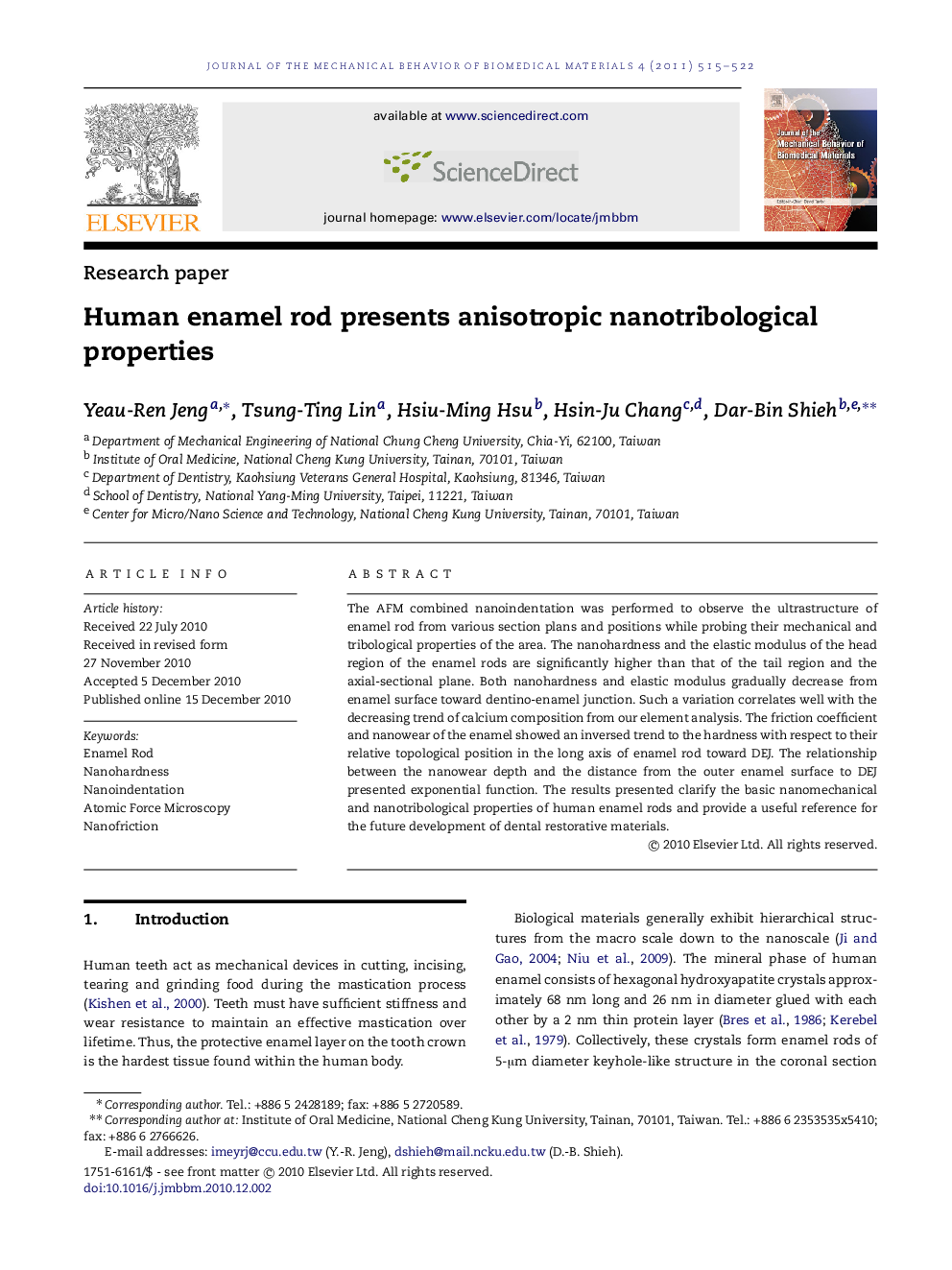| Article ID | Journal | Published Year | Pages | File Type |
|---|---|---|---|---|
| 811209 | Journal of the Mechanical Behavior of Biomedical Materials | 2011 | 8 Pages |
The AFM combined nanoindentation was performed to observe the ultrastructure of enamel rod from various section plans and positions while probing their mechanical and tribological properties of the area. The nanohardness and the elastic modulus of the head region of the enamel rods are significantly higher than that of the tail region and the axial-sectional plane. Both nanohardness and elastic modulus gradually decrease from enamel surface toward dentino-enamel junction. Such a variation correlates well with the decreasing trend of calcium composition from our element analysis. The friction coefficient and nanowear of the enamel showed an inversed trend to the hardness with respect to their relative topological position in the long axis of enamel rod toward DEJ. The relationship between the nanowear depth and the distance from the outer enamel surface to DEJ presented exponential function. The results presented clarify the basic nanomechanical and nanotribological properties of human enamel rods and provide a useful reference for the future development of dental restorative materials.
Graphical abstractHuman enamel consists of hierarchically integrated enamel rods in both topology and nanomechanics. The nanomechanical properties of this tissue present a consistent trend of declination from the tooth surface toward DEJ at micro scale. Specific spatial distribution patterns of tribological properties were also discovered in the sub-enamel rod nanoscale. Figure optionsDownload full-size imageDownload high-quality image (114 K)Download as PowerPoint slide
